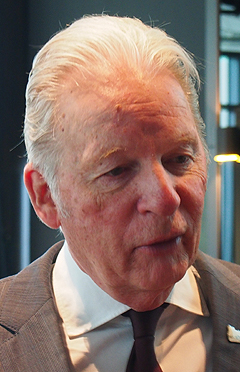Automated cars won't stop crashes: Sweatman
BY IAN PORTER | 5th Feb 2016

Dr Peter Sweatman who designed and ran several large trials of automated and connected vehicles while he was head of the University of Michigan Transport Research Institute, said crashes will be difficult to avoid even when a large proportion of the vehicles on the road are automated.
The authorities and consumers will have it in their power to choose a level of safety, Dr Sweatman told an Intelligent Transport Systems Australia meeting in Melbourne.
“So, what’s acceptable safety? It’s an increment better than what you have at the moment, but when you go to a totally driverless situation, you can choose what level of safety you want. How are we going to do that?“Realistically, there are still going to be crashes, and that’s going to be controversial if driverless vehicles are crashing,” he said.
“We need to get beyond that and realise that actually the safety is going to be that much better.”

“One of the problems with this, and we have seen it in Mountain View with the Google testing, is that machines do exactly what they are programmed to. (Which is why they are automated, not autonomous.)“So if those machines are programmed by a responsible company to stop on a red light or an amber light, then that’s what they do, every time.
“And, of course, they’re in a traffic stream with human-driven vehicles and the human is looking at the signals and trying to cheat, you know. The two don’t go together too well,” he said.
“So the challenge there is whether to get very quickly to a fully automated system so that it’s not an issue, or to get real about what the standard really needs to be for both the machine and the human.
“At the moment, the machine is programmed conservatively by a responsible company and the human is doing what they always do.”According to Dr Sweatman, that is the reason there will continue to be crashes, at least until there is a high proportion of automated vehicles on the road, but the crashes will be less severe.
“The crashes that have been experienced by automated vehicles have been of very low-severity.
“So, we’re not going to be in a zero-crash situation. There will always be some situation that isn’t being dealt with by the machine.”Dr Sweatman said governments and consumers will still have a choice about how much safety they want even when there is a high proportion of automated vehicles.
“For example, if you are designing something where the vehicles are habitually a lot closer together, for efficiency reasons, then the closer together those vehicles are, the more errors there are going to be in the system.
“Even from that perspective, there is a choice being made. Our choices at the moment aren’t articulated,” he said.
“There is always a choice in this, whether or not it is expressed. That will still be the case, but the serious crash rate, the fatality rate, will be a factor of 10 less.”Dr Sweatman left the University of Michigan at the start of the year and has formed a partnership, CAVita, with Abbas Mohaddes, the former chief executive of Iteris, a company that sells traffic management systems and weather analysis to the agricultural sector.
CAVita will act as an “online dating agency” for all the public and private entities trying to understand what roles they can play in the deployment of automated and connected vehicles, Dr Sweatman said.
He said there are now thousands of trials in these two areas being conducted across the US and a huge diversity of technologies being developed.
“How do they deal with this diversity issue? That’s why we set up CAVita. But we are interested not only in the connected vehicle and the automated vehicle, but other technologies are important too, whether that’s the Internet of Things, Big Data, and this whole Smart Cities movement.
“We want to keep ahead of the curve as to who the important players are, who the most important partners are and making sure that the government agencies are well-informed about this, too.”Dr Sweatman said every state in the US will have to develop policies for these technologies and they will have to invest in infrastructure to facilitate their introduction.
“It’s all about managing risk and if they feel the technology they deploy this year will be defunct in a couple of year’s time, the automotive industry will have moved on in some way and leave them behind. There are these fears and we need to be able to manage all of that and they need help to do that.”Before he went to America in 2004, Dr Sweatman had played a prominent role in road research in Australia. In 1976, he established the heavy vehicle group within the Australian Road Research Board (ARRB) and pioneered the scientific analysis of commercial-vehicle operation on the highway system.